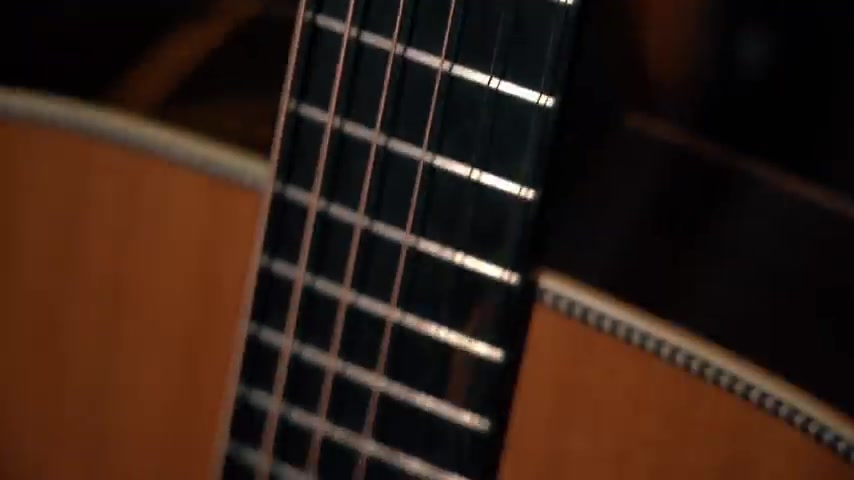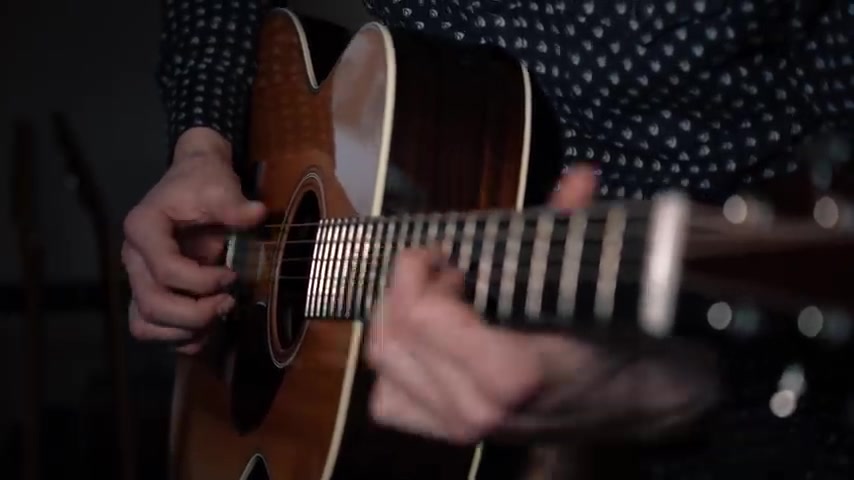https://www.youtube.com/watch?v=rdpmCXdm3aM
5 MUST KNOW tips for your acoustic playing!

Hello .
Yeah .
Hi .
How are you doing ?
No , its I want a dramatic voice over as you know , I love playing the acoustic guitar for me .
It's a great way to forget about everything .
What you see is what you get , whatever love you put in it is given back instantaneously .
And if you're really getting there , the reward is even bigger .
Every sound you hear is a direct and pure result made by your hand .
No effects , no trickery , no artificial sounds , just you the guitar and love .
Nice .
So today I'm sharing with you five tips to enhance your acoustic game because putting in the effort is really worthwhile .
Number one dynamic in your strumming .

So tip number one is something that I believe it really defines mind playing immensely and doing this can make any basic core progression sound marvelous .
So let's say we're playing FCG .
A minor nine out of 10 people would just start drumming like this .
Yes , like a maniac but no , don't .
Well , not always .
Anyways , try adding some dynamics , meaning really accentuated , difference between loud , also called for and quiet , also called piano .
You can do this in multiple ways .
But the easiest way is to really start making a difference between the strings you're hitting .
And this requires some practice because it's not easy hitting just those strings while making a strumming motion .
But it's really great if you can , I use this technique in my how to turn those same old chords into something beautiful video .

And it leads to being able to play stuff like this .
You see , I'm really making a strumming motion but only picking out the strings .
I'd like to hear not too much on the dynamics in this particular case , but still choosing the strings .
So if we would translate that to the previous courts , let's see what we got .

So one real big bonus which leads me to tip number two is that you can add melodic lines in your chords .
So if you're hearing that thing , like you're trying to start a fire , you're never going to hear those subtle lines running through the chords .
So if you take tip number one of playing with dynamics into account , we can very subtly slide those sweet melodies in between our chords .
And if you want to spice those up even more , there's a myriad of things you can do .
Let's try adding some hammer ons and pull offs to get into the magical territory .

So what notes can you use all the notes that sound good ?
Well , let's be honest , nine out of 10 times you're playing open chords anyways , this usually means that any open string will sound good with the chord some better than others .
Of course , depending on the type of chord .
But try to leave the root note on there and just add as many other notes as you like , try to keep on listening and remember the ones you like number three , why are you even doing this ?
OK .
So this is something that will make all the difference .
Whenever you see someone changing chords , they tend to add these transition drums in between and God , they irritate me .
Don't know what I mean .
This kind of playing often sneaks up onto you until you're not even realizing you're doing it .
And I just bet a lot of you are doing this .

So for me , there's two reasons why I dislike this one .
Often the notes are just a bunch of open strings because they play it when they change chords mostly to hide a sloppy transition of something .
So , of course , that's not the most beautiful thing you can hear just open strings , right ?
So number two , it's often pretty messy rhythmically , just put it in .
No one notices .
I've got myself more time on my hands to change courts and yes , next court there we are .
Well , no , it could sound so much sweeter if you just leave those out , think about it , why would you want to emphasize the moment you're changing courts ?
Well , I know why people do it because it's easier .
You've got more time to change .
Brilliant if you're just starting out .
But this also does not encourage you to get the changes right faster .
It's just lazy .
Yes , it is lazy .
You sometimes need to push yourself your fingers and your brain to get the next court faster .

And if you don't push yourself , it never go faster .
So tip three is try leaving out those transitioning notes because your playing will sound a lot cleaner .
Eventually changes will go faster and it'll be just so much nicer to listen to .
Ok .
Tip number four and here we go .
Yes .
Finger picking pretty essential if you're on the acoustic , if you ask me .
And by the way , this is also awesome to try and play on the electric .
But anyways , finger picking is such a great manner to let the guitar speak .
You're opening up so much more possibilities .
True .
The beginning can be a bit difficult , but that's why you should do it from the get go so that your finger picking isn't falling behind on the rest .
So that makes it less difficult to cope with the struggles of finger picking .
So , a good video of me to start out with finger picking can be 10 easy finger picking songs where I play .
Yes , you guessed it .

10 extremely hard G no , no , 10 songs played finger picking that aren't that difficult .
So here's an example of what you can do .
Put this guitarist tune and drop the play a minor D minor F and G .
So a few things about finger picking start out slowly and start with letting your thumb do most of the work .
This example started with an A minor chord over here and the thumb is just playing all corner notes .
Now , the fingers only need to add three little notes to make it sound like an intricate finger picking pattern .

So here it is slowly and now move on to different chords , mix the patterns up a little bit and boom .
Crazy could rise .
So the last thing in the list number five , adding percussive elements to the guitar sound .
I'll show you two common ways to add these one strumming and one finger picking .
So first one is drumming to spice up your rhythm playing .
It's pretty common to add a little percussive beat on the weak beats .
Here it is .
So in this case , percussive means that there is no bitch involved .

It's just a dead note .
We're substituting our percussive instrument on just a guitar .
In this case , the snare drum , a very cool thing to incorporate into your playing if you just want a little more than just the acoustic guitar sound .
So how this works is that you just mute the strings with the palm of your right hand where you would usually just strum a chord and put it on the right spot in the rhythm .
12341234 .
And there you are And now for the finger picking part , we're going to add a percussive slap with the side of your thumb , we're hitting the strings , creating a slap sound for a detailed lesson about this technique .
Check out this video where I explained this technique extensively , but this is how cool it can sound .

How cool is that ?
So those were five tips to enhance your acoustic playing and taps for these are available on my Patreon page .
I hope you learn something from it .
If so , please let me know and hit that like button and subscribe to the channel .
If you haven't done that already , see you next time with another video .
Give us and have a wonderful day .
Are you looking for a way to reach a wider audience and get more views on your videos?
Our innovative video to text transcribing service can help you do just that.
We provide accurate transcriptions of your videos along with visual content that will help you attract new viewers and keep them engaged. Plus, our data analytics and ad campaign tools can help you monetize your content and maximize your revenue.
Let's partner up and take your video content to the next level!
Contact us today to learn more.